
The changing world of podcasting is on virtually everyone’s mind – in the radio broadcasting industry. At Jacobs Media, our involvement with the Podcast Movement conferences has underscored just how important a space it’s becoming. Pandora, Spotify, and other players are jumping into the fray, raising questions about how this platform will change in the coming year.

Our in-house podcasting maven and “Digital Dot Connector” – Seth Resler – makes it a his life’s mission to keep up with the medium as it navigates change.
In today’s guest post, Seth handicaps the space, providing an analysis that combines the available metrics with his own intuition about who will emerge as the next important player in the podcast directories sweepstakes.
It’s a must-read for broadcasters – or anyone else – serious about making an impact in podcasting and gaining an understanding of the space. – FJ
Podcasting is overwhelmingly a medium made for mobile devices, and for as long as anyone can remember, Apple has dominated the way listeners find podcasts. In 2005, Apple first included podcasts in iTunes. With the release of iOS6 in 2012, Apple gave podcasts their own dedicated mobile app (aptly named “Apple Podcasts”). And with the introduction of iOS8 in 2014, Apple made this app native, meaning that it came pre-installed on every iPhone and iPad sold.
This made accessing podcasts relatively easy to discover and consume, while securing Apple’s spot as the dominant podcast directory. Today, over 60% of all podcast listening happens through Apple. More, if you consider that a number of third-party “podcatchers” (podcast listening apps) rely on Apple to populate their own directories.
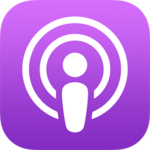
A few years ago, Stitcher was the closest thing to a second place directory, accounting for somewhere in the neighborhood of 3% of podcast downloads. But unlike the Apple Podcasts app on iPhones, Stitcher — or any other podcatcher — did not come pre-installed on Android phones.
To listen to a podcast, Android users first had to go to the Google Play Store and download a podcatcher. This extra step proved prohibitive, and that’s a problem for podcasters and would-be listeners. After all, Android users outnumber iOS users. In the U.S., Android accounts for roughly 55% of smartphone operating systems, compared to 45% for iOS:
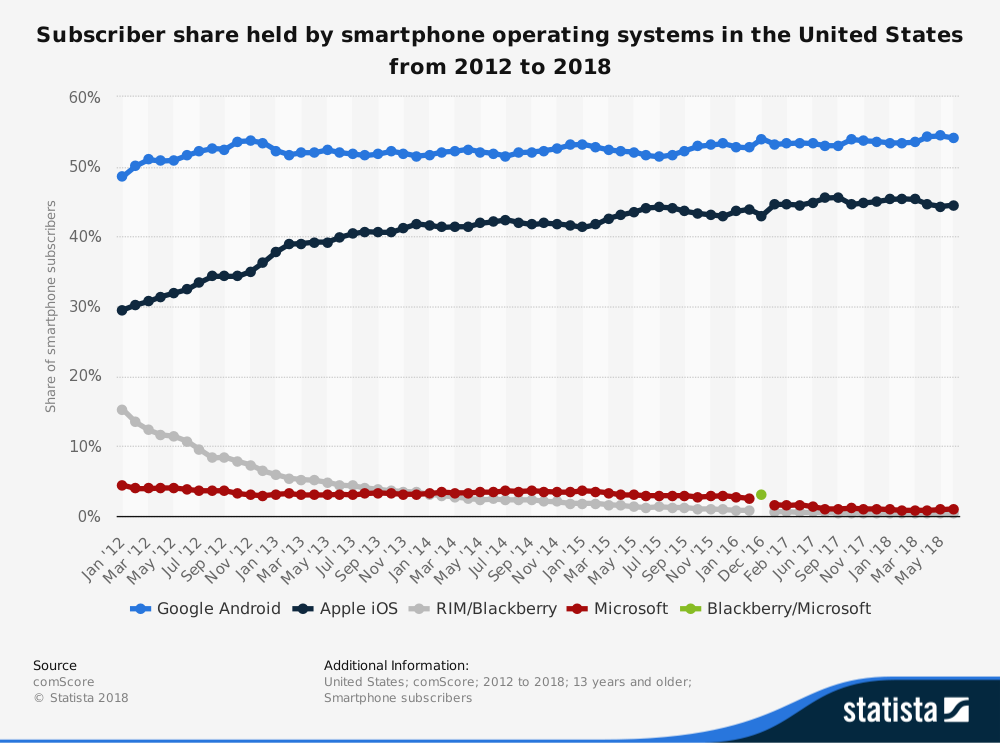
Globally, the difference is even starker, with Android accounting for nearly 86% of all smartphones in the world marketplace:
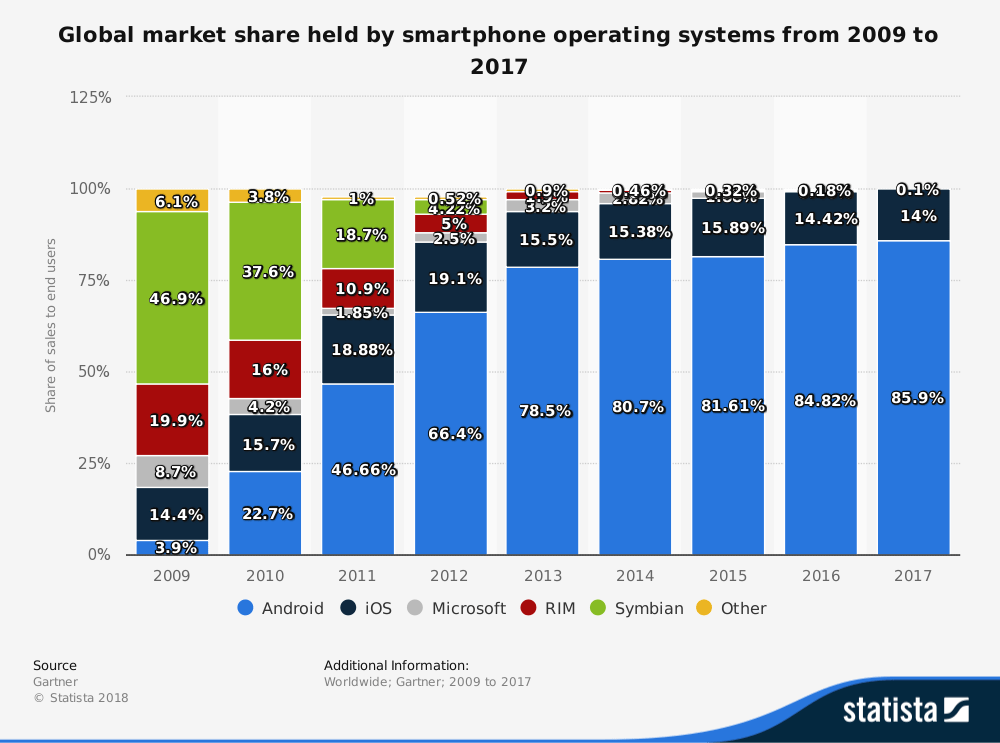
This has lead many podcasting experts to conclude the key to unlocking explosive podcast growth is in finding a way to make it easy for Android users to listen.

Over the years, there have been a number of attempts. Podcast hosting company Blubrry championed an effort called “One Click Subscribe on Android.” This allowed podcasters to create a link that would automatically search an Android user’s phone for an existing podcatcher to open a podcast in, and recommend a podcatcher to install if the user didn’t have one. Todd Cochrane, the CEO of Raw Voice / Blubrry, has done an admirable job of enlisting numerous different podcatcher developers in this effort.
Hopes of penetrating the Android market were raised further in 2015, when Google announced it would start including podcasts in its native Google Play Music app. Podcasters began to bandy the word “gamechanger” about. Unfortunately, Google didn’t bother to tell the general public it was including podcasts, and few people discovered them buried in the app. Moreover, the Google Play Music app only works in the U.S. and Canada. It wasn’t long before podcasters realized this was not the Holy Grail solution they had been seeking.
Today, we have multiple contenders vying for second place behind Apple in the podcast directory race. All of them have the potential to drive substantial growth in podcast listening among Android users. I’ve handicapped them so you can get a sense for who has the best chance of emerging as a viable #2 to Apple in the podcasting arena:
Google Podcasts
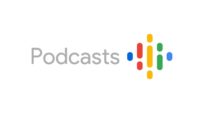 In June, Google made the announcement podcasters had been yearning for: it was developing its own podcatcher, “Google Podcasts.” The app was introduced with a lot of fanfare, including a declaration by Google’s Podcasts Product Manager Zack Reneau-Weeden that his team’s mission “is to help double the amount of podcast listening in the world over the next couple of years.” This was followed by a high-profile keynote address at the 2018 Podcast Movement conference.
In June, Google made the announcement podcasters had been yearning for: it was developing its own podcatcher, “Google Podcasts.” The app was introduced with a lot of fanfare, including a declaration by Google’s Podcasts Product Manager Zack Reneau-Weeden that his team’s mission “is to help double the amount of podcast listening in the world over the next couple of years.” This was followed by a high-profile keynote address at the 2018 Podcast Movement conference.
The app wasn’t as sophisticated as other third party podcatchers out there, but that’s okay, because the most important feature is the fact that it is pre-installed on Android phones.
Except it isn’t that simple.
For starters, even though it is on their phones, most Android users don’t know about it. The app automatically opens when people click on an appropriate podcast link, but unlike on iOS devices, there’s no pre-installed homescreen icon for the Google Podcasts app on Android phones.
Why the difference? Apple, of course, is in control of both their operating system and their handsets. On the other hand, Google has to wrangle multiple manufacturers like Samsung and LG in order to make significant, sweeping, systemic changes. This makes the act of adding a new pre-installed homescreen icon quite political and gnarly. And in all likelihood, podcasts aren’t a high enough priority within Google to get the app icon across the finish line.
Moreover, Google didn’t include podcasts in their app’s directory by asking podcasters to submit their shows; instead, it scraped the feeds from podcasters’ websites. As a result, even among podcasters, awareness of the app is relatively low. Podcasters, who routinely encourage their listeners to subscribe on Apple Podcasts, often aren’t sure whether they should tell listeners to subscribe on Google Play Music (which hasn’t been retired yet despite rumors of its demise) or Google Podcasts. In short, there’s confusion.
To date, there are few signs that Google Podcasts is living up to the hype. In a blogpost titled, “Why is the Google Podcasts App Failing So Hard?,” Amplifi Media’s Steve Goldstein recently asked several leading figures in the podcasting space for their thoughts, and they aren’t very encouraging.
Spotify

If Google can’t seem to get its act together on a native app, the next best hope for podcasters is to have their shows included in an app that’s already installed on millions of phones.
Enter Spotify.
They began including select podcast titles in 2017, and opening their doors to allowing all podcasters to submit their shows earlier this year. With 191 million active users worldwide, this makes podcasts accessible to a whole new audience.
Unlike Google Podcasts, Spotify is already showing a significant contribution to podcast downloads. At the 2018 NAB Show in Las Vegas, Libsyn’s VP of Podcaster Relations, Rob Walch, said of Spotify, “For the first time, we have a real #2 in the podcasting space.” In November, he reported that Spotify accounted for 8.1% of all downloads for podcasts hosted by his company.
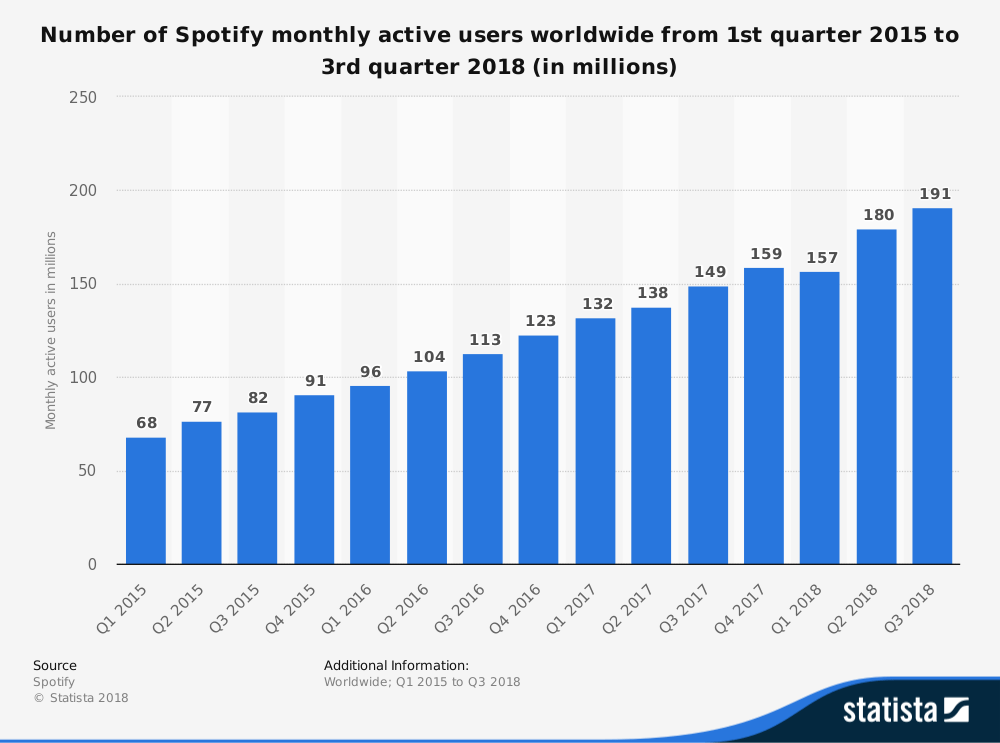
Spotify has gone above and beyond becoming just a podcast directory. It has also invested in high-profile talent, like comedian Amy Schumer to create original podcasts. They also started a podcasting bootcamp for female voices of color, and launched an original branded podcast. Actions speak louder than words, and Spotify’s actions say they’re a real contender.
Pandora
![]() Pandora, which should soon close its sale to Sirius XM, is the latest music streaming service to dive into the podcasting space. (Many have speculated that podcasting is attractive to Pandora because expensive royalties for music have proven cost-prohibitive.)
Pandora, which should soon close its sale to Sirius XM, is the latest music streaming service to dive into the podcasting space. (Many have speculated that podcasting is attractive to Pandora because expensive royalties for music have proven cost-prohibitive.)
Last month, Libsyn announced it was partnering with Pandora to submit selected shows to the service’s directory. This month, Pandora published a form allowing podcasters hosting on any platform to submit their shows.
At this point, Pandora will not be including everyone who submits — there are over 600,000 podcasts out there! — but the presumption is they will eventually follow Spotify’s lead and include everyone who wants in. This is good news, because Pandora has long been the leading music streaming service in the U.S. (until it was recently surpassed by Spotify). The bad news is that Pandora is only available in the U.S.
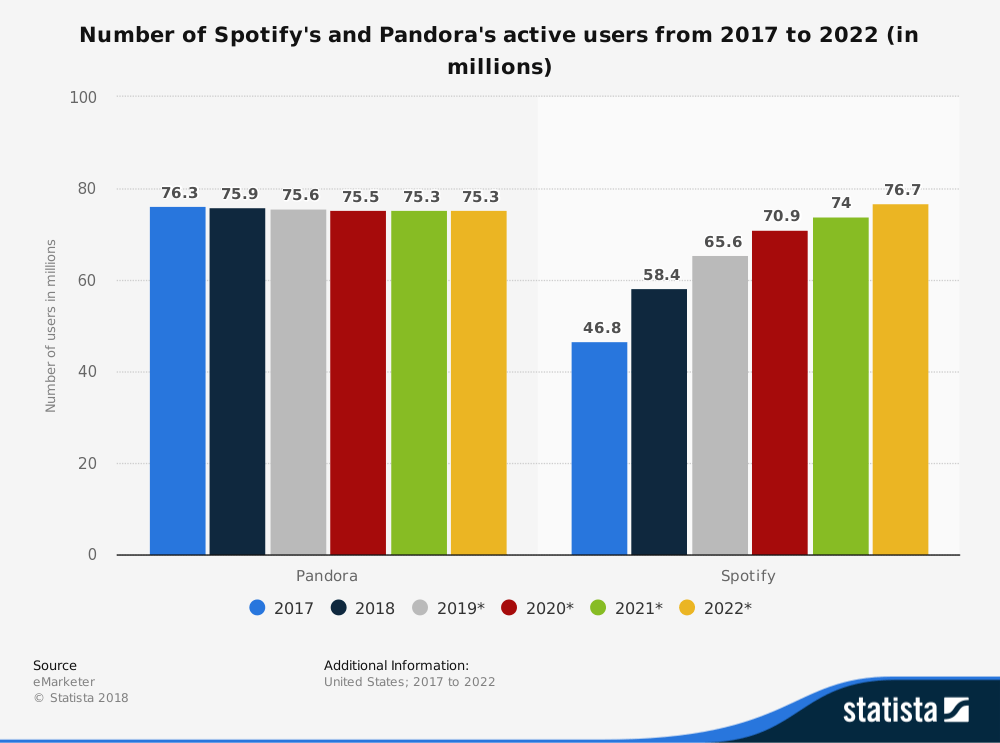
For as long as the medium has been around, a significant contingent of podcasters has complained about the medium’s “discoverability problem.” (Though not everyone agrees on this.) Pandora is positioning itself as a solution to this problem. In the blogpost announcing its podcast directory is now available to the public, they state: “The key goal for our podcast launch was to solve the user question of ‘What podcast should I listen to?'”
Pandora has adapted its Music Genome Project, its algorithmic secret sauce that determines your music taste, to podcasts in order to “effortlessly serve up highly personalized podcast recommendations that are completely unique to your tastes.” No doubt, smaller podcasters are hoping this will help their shows find audiences. Only time will tell.
The Rest
While these three are making the biggest moves to expand podcast listenership, there are others who could also unlock new audiences, including:
YouTube: Behind Google, YouTube (which is owned by Google) is the largest search engine in the world. While it is primarily a video platform, it is also the largest digital source of music across every age group. While many podcasters publish their episodes to YouTube, imagine if the site made a concerted effort to embrace the space.

Amazon: Amazon’s podcasting initiatives have been so far largely limited to Audible, the audiobook company it owns. Audible hired Eric Nuzum away from NPR to lead its podcasting efforts a few years ago, but the company laid off its original podcast staff earlier this year.
The success of the Alexa family of smart speakers could open up a new avenue for podcasters to find listeners – and vice-versa. Currently, the experience of listening to a podcast on a smart speaker has rough edges, but that’s likely to improve with time, especially if the eCommerce giant decides that podcasting is worth a significant investment of resources.
Netflix: On its way to a massive 60 million streaming subscribers, Netflix invested a whopping $6.3 billion on original content in 2017. Other video streaming services have used podcasts as source material for shows, including Amazon Prime’s Lore and HBO’s 2 Dope Queens and Pod Save America. No doubt, Netflix has noticed.
While Netflix is a video directory at the moment, what if they decided to strategically expand into audio? Would this be a way for Netflix to not only offer more content, but also give the platform fertile ground to grow podcasts which could eventually blossom into TV shows?
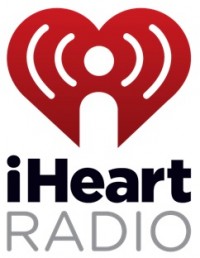 iHeart Radio: Although it doesn’t constitute a major share of podcast downloads currently, the iHeart Radio app does include podcasts. Having surpassed 120 million users this summer, it certainly has the potential to be a big player in the space. And iHeartMedia’s recent $55 million investment in the HowStuffWorks platform is another signal the company is serious about the on-demand audio opportunity.
iHeart Radio: Although it doesn’t constitute a major share of podcast downloads currently, the iHeart Radio app does include podcasts. Having surpassed 120 million users this summer, it certainly has the potential to be a big player in the space. And iHeartMedia’s recent $55 million investment in the HowStuffWorks platform is another signal the company is serious about the on-demand audio opportunity.
TuneIn: TuneIn is first and foremost a streaming radio directory, where the ground is constantly shifting (Entercom is out! Cumulus is in!). But in addition to TuneIn’s more than 120,000 radio streams, it also boasts over 5.7 million on-demand programs. TuneIn also has wide penetration in smartphones, smart speakers, smart TVs, and connected cars.
For TuneIn, radio has been the focal point, while podcasts are on the backburner. But that could change as podcasting becomes more mainstream in scope.
While it’s unlikely any of these players will soon topple Apple as the king of podcast directories, the race for second place is just heating up. Whichever service wins, the competition will be good for podcasters and perhaps even better for listeners.
- A Simple Digital Treat to Thank Your Radio Listeners This Thanksgiving - November 13, 2023
- Interview Questions When Hiring Your Radio Station’s Next Digital Marketing Manager - November 6, 2023
- A Radio Conversation with ChatGPT: Part 2 – Promotions - October 30, 2023




Leave a Reply